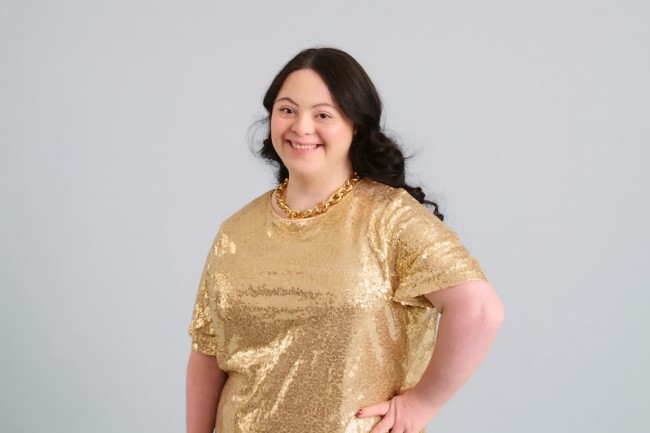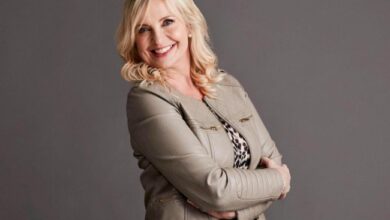Ellie Goldstein: Trailblazing Model Reshaping Fashion and Inclusion

Ellie Goldstein is not just a model—she is a symbol of inclusion, empowerment, and change in the fashion world. Born with Down syndrome, Ellie has defied stereotypes to become a celebrated public figure whose presence is shifting how society views beauty, disability, and representation. This article explores her journey, her achievements, and the impact she is making across industries and communities.
Early Life and Background
Childhood and Family
Ellie Goldstein was born in 2001 in Ilford, London. From a young age, her family nurtured her confidence, creativity, and sense of self. They encouraged her to pursue her interests and bolstered her self-esteem, helping her to carry a strong belief that limitations should not define one’s destiny.
Discovery of a Dream
Growing up, Ellie was drawn to art, fashion, and self-expression. She often participated in modeling-style photo sessions for events and charity causes. Her early forays into modeling were modest, yet they planted the seeds for a larger ambition: to see someone like her featured in global campaigns and editorial spreads.
Breaking Into Modeling
Representation Matters
Ellie’s story began to attract attention at a time when the fashion world was slowly awakening to the need for inclusivity. The modeling industry has historically idolized a narrow standard of beauty—tall, slim, neurotypical models—leaving many groups underrepresented. Ellie emerged in this context as a powerful counterpoint, highlighting that beauty is diverse and multidimensional.
Signing with Representation
Her talent and presence eventually drew interest from agencies specializing in inclusive talent. With representation secured, Ellie began accessing professional photoshoots, auditions, and opportunities that had rarely been extended to people with Down syndrome before. Her unique look, confident posture, and expressive features distinguished her in an industry seeking new voices.
Milestone Campaigns and Editorials
Gucci Beauty Campaign
One of Ellie’s landmark moments was starring in a major beauty campaign for a high-end brand. This campaign broke barriers by highlighting her in editorial-quality images that celebrated her features—not as a novelty, but as authentic beauty. The campaign received widespread attention, not only from fashion circles but also from mainstream media, stressing how representation can transform perceptions.
Vogue and Magazine Covers
Ellie has achieved what few others in her position have: gracing high-profile fashion magazines. Her participation in editorial spreads and her cover appearances elevated her from model to symbol. Her cover moments mark progress in media inclusion—transforming a “first” into something others can follow.
Brand Collaborations
Her growing influence has led to collaborations with global brands across sectors—fashion, beauty, wellness, and lifestyle. These partnerships reflect both her marketability and the shifting priorities of brands seeking to embrace diversity. By aligning with Ellie, these companies amplify their own commitment to inclusion, and she amplifies theirs.
Advocacy and Influence
Beyond Modeling
Ellie does more than pose for photos. She uses her platform to advocate for disability awareness, challenge myths, and push for systemic change. She speaks publicly about the importance of representation—not only in fashion, but in media, advertising, workplaces, and public policy.
Championing Disability Representation
Ellie often addresses the harmful stereotypes and low expectations imposed on people with disabilities. She encourages brands and institutions to move beyond token gestures and toward meaningful inclusion. Through interviews, campaigns, and public appearances, she highlights the need for accessible spaces, equitable opportunities, and respectful portrayals.
Community Engagement
Ellie supports organizations and initiatives that work directly with individuals with disabilities. She takes part in campaigns that promote education, self-esteem, and social inclusion. Because her story is highly visible, she becomes a bridge—connecting audiences who may have limited exposure to the day-to-day realities of people with Down syndrome.
The Cultural and Industry Impact
Redefining Beauty Standards
Ellie Goldstein’s presence challenges the old, rigid standards of beauty that dominated fashion for decades. The industry is being forced to reassess definitions of attractiveness, diversity, and desirability. Instead of a single ideal, beauty now accommodates multiple voices, appearances, and stories.
Inspiring a New Generation
Young people with disabilities now see someone who looks like them succeeding on big stages. Ellie’s visibility nurtures hope and aspiration. She sends a message that the mainstream creative world is not closed to them—and that they too can dream on a grand scale.
Influencing Brand Strategies
More brands are now incorporating diverse models in their campaigns—not as an afterthought, but as an integral part of their identity. Ellie’s success helps shift inclusion from experimental “diversity campaigns” to foundational business strategy. She changes what brands perceive as “normal.”
Challenges and Misconceptions
Overcoming Stereotypes
Ellie often confronts assumptions: that someone with Down syndrome cannot handle a professional photoshoot, or that she is being exploited as a novelty. She addresses these head-on, emphasizing her agency, professionalism, and artistic integrity. She demonstrates that she is not a token, but a qualified individual in her own right.
Negotiating Tokenism
Representation is not enough if it remains symbolic. Ellie navigates the tension between being a “first” and being sustainably included. Her goal is not to be a one-time “diversity checkmark,” but to open the door for many more to follow.
Access and Practical Barriers
Behind high-fashion editorial shoots lie challenges: accessibility at studios, inclusive direction, understanding from teams, and accommodations. Ellie and her team push industry professionals to learn, adapt, and include practical support—such as flexible scheduling, clear communication, and respectful working environments.
Looking Forward: What’s Next for Ellie
Media and Entertainment
Ellie is expanding into new mediums—television appearances, documentaries, possibly acting roles. Through these channels, she can expand her voice and reach new audiences beyond fashion.
Mentorship and Leadership
As she gains influence, Ellie may mentor younger models with disabilities, helping them navigate the industry’s hurdles. She could launch initiatives or platforms to promote inclusive talent, elevating voices behind the scenes—stylists, photographers, creatives—with disabilities.
Institutional Change
Ellie’s growing influence may drive policy shifts: inclusive casting standards, disabled-friendly infrastructure in studios, and accountability in marketing practices. She advocates change not just through image, but through systemic transformation.
Conclusion
Ellie Goldstein is more than a model with Down syndrome. She is a force of change—a person breaking barriers in fashion, media, and public consciousness. Through her work, she is broadening the definition of beauty, amplifying voices long sidelined, and inspiring institutions to rethink inclusion. Her journey continues to evolve—and with it, the world’s view of ability, beauty, and possibility.
To truly honor Ellie, the fashion world must do more than celebrate her: it must carry forward the shift she represents and sustain it for many more who follow.



